For years we’ve all been taught that the first step to creating content that ranks is to target keywords.
For years, the ability to rank high in SERPs seemed to rely heavily on two things. First, pick keywords that are high traffic and low competition. Then, practice keyword density.
This is no longer true.
In fact, Google views too high of a density as keyword stuffing, which they will punish.
Keyword research is still important, but the way we should be implementing it has changed.
Why?
First, SEMRush did a study of Google’s ranking factors and found keywords were pretty far down the list. The first keyword related metric came in at 12th place.
That’s well below customer engagement metrics such as time on site and bounce rate.
Second, although meta tags are useful for users, they no longer influence rankings.
Google’s algorithm has become more sophisticated. It’s now smart enough that it no longer has to rely on simple keywords to tell it what your content is about.
If you want to be rank high in SERPs in 2018, you’re going to need to start targeting your customers and not just keywords.
Don’t worry. I’m going to walk you how to do this step-by-step.
But first, let’s look at the algorithm changes that have led to this shift.
Algorithms are becoming more human
In 2011, Google rolled out Panda which was designed to target and penalize sites that were producing thin and low-quality content.
Why?
People had learned that they could follow a practice called keyword stuffing to rank high in search results.
Here’s an example of keyword stuffing for the phrase ‘ALT Tags’:
Keyword stuffing may have helped rank your content in search engines, but it tended to result in an unnatural flow that didn’t resonate with readers.
Google recognized this and decided to find a way to penalize the practice.
This was just the beginning of Google reducing the effectiveness of keywords in SERPs.
The next year brought the introduction of the Knowledge Graph.
This was the beginning of Google being able to interpret strings rather than just isolated words.
For example, Google understands that when someone types in the keyword “Obama,” they probably are referring to the US President Barack Obama.
The knowledge graph can connect this one word with not only an actual person but also with some connections to other people, places, and things.
In 2013, there was even further advancement with the introduction of Hummingbird.
It was a huge change and a big step further in Google’s ability to handle “conversational search.”
Even five years ago, Google was beginning to understand and answer intent.
This 2013 example shows the simple question of, “will it rain tomorrow?”
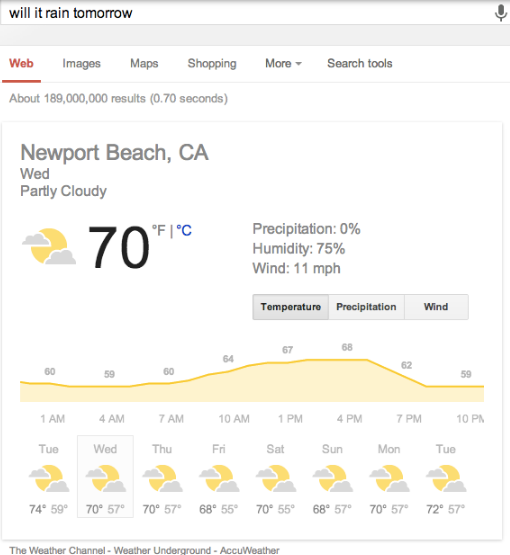
The question did not have to state a location or ask for a weather forecast. Google simply knew the searcher’s location and knew that rain was related to weather.
In 2015, an even bigger change came, when Google announced the launch of machine-learning artificial intelligence that it had dubbed RankBrain.
Within months of it being launched, Google claimed it was their third-most important ranking factor inside their search engine algorithm.
Why?
RankBrain was designed to help identify and respond to intent, instead of just words.
What does this mean?
Well, for example, if I search for ‘RankBrain’ I’m not really telling Google what my intent is, am I? All I’ve given it is the one word.
However, check out the search results:
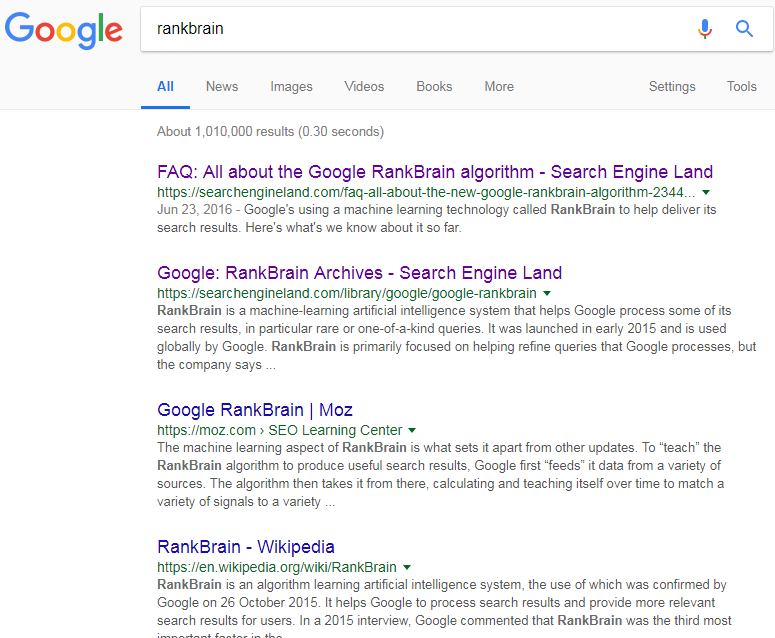
Now, look at the search results for ‘what is RankBrain?’
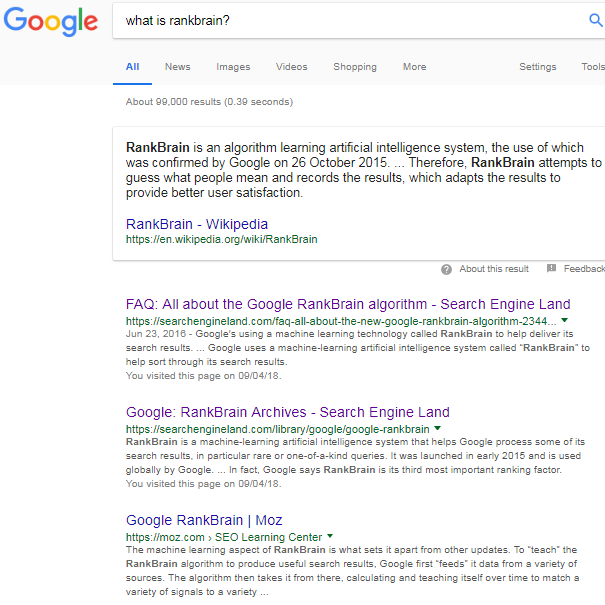
They’re the same.
RankBrain has been able to use machine learning to understand that both of these keywords have the same intent for the majority of people.
This is how Google can make sure it’s bringing back the most relevant content to its users.
The first search result is FAQs on RankBrain. If you check it out, the article mentions RankBrain 52 times in 2,660 words, which is just under 2% of the time.
Optimal keyword density in this new world is between 0.5% and 2.5%. There was definitely no keyword stuffing done to achieve ranking.
This just goes to show that keywords alone will no longer grab you the top spot in search results.
In fact, keyword densities that are too high will be penalized.
With the move to mobile-first indexing and the growth of voice search, algorithms have had to get even better at deciphering intent rather than words.
There is an increasing trend toward voice search using apps such as Google Assistant.
It’s available on more than 400 million devices. Some estimates indicate Google sold over 10 million Google Home units last year alone.
This impacts the way search results work in two ways:
1. Digital assistants are beginning to influence search results.
Smartphone assistants will answer basic queries with three different listings.
They’ll also blend these requests with your own personal, historical data to tailor results.
Google Home will also provide you with the answer in the featured snippet for that search.
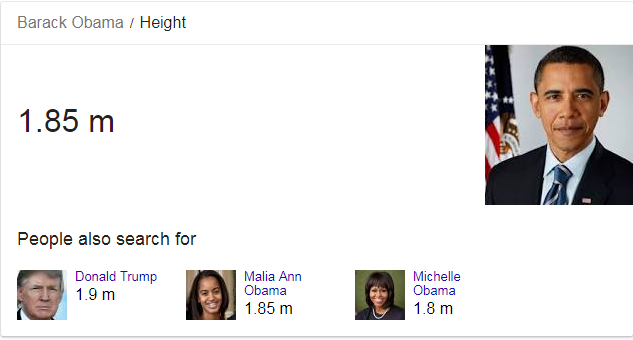
If you want your content to be the result heard by searchers, you need to obtain the featured snippet spot.
2. Voice search allows for conversational phrasing.
Users of voice search want to be able to speak naturally and still get the results that they ask for.
That means you need to consider conversation, content, and context.
To meet these needs, algorithms and marketers are increasingly required to focus on conversational language and keyword clusters, rather than specific keywords.
For example, Haahr previously explained that if a user is searching for “Walmart,” they don’t want to see results about the head office.
They expect results showing them the Walmart store closest to them.
So how do we target customer engagement instead of targeting keyword use?
Understand the intent of your audience
I mentioned earlier how Google’s RankBrain was designed to interpret the intent of searchers.
Search engines are putting customer needs, wants and desires first, and we should be doing it too.
So, how do we capture this intention and focus on it rather than specific words?
First, let’s look at what a user intent SEO strategy really is.
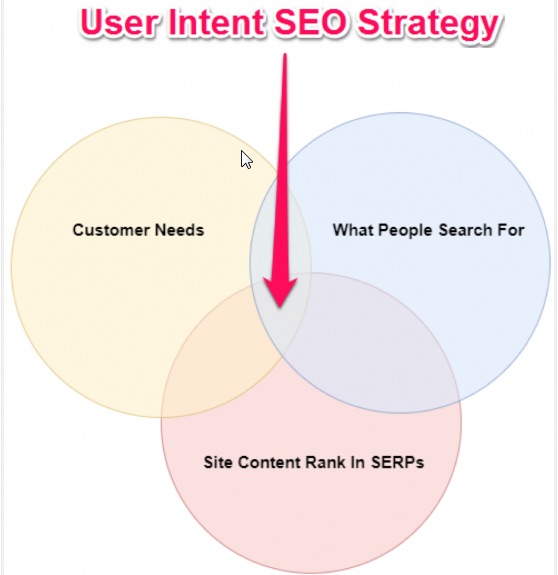
We know that we need to understand the overlap between what phrases people are actually searching for and what they really mean.
We also have to pinpoint where this intersects with our content marketing strategy.
It’s important to understand that some general keywords can be classified into either navigation, research or conversion keywords.
These classifications align with the stage of the conversion funnel that a searcher is in.
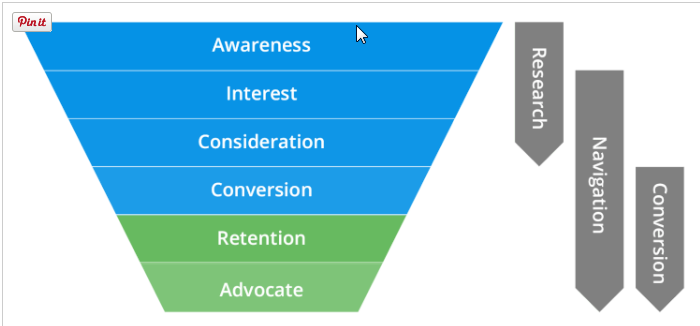
Content needs to take into account where customers are in the funnel, as well as what keywords they’re using, to properly target intent.
Research keywords are typically used with informational intent.
These searches are likely looking for broad informational guides such as walk-throughs, how-tos, and step-by-step procedures.
Conversion keywords imply transactional intent. Users are getting ready to convert or buy.
Common phrases they may search for are:
- “Coupon”
- “Discount”
- “Shipping”
- “Where to buy”
- “[product one] versus [product two]”
- “Best [product] under [price]”
- “Best [product] for [consumer group]”
Incorporating these words into your keyword research can help identify long tail phrases that better match intent.
Navigation keywords are typically used when a shopper is already looking for a specific brand, company or site.
For example, “content marketing” may be an informational keyword, but “Content Marketing Institute” implies someone is specifically looking to navigate to that company.
Keywords should line up with customers’ level of interest as well as their intent.
The better able you are to understand customer intent, the easier it will be for you to target customers instead of just keywords.
There are a number of tools you can use to help you better understand the intent of your current customers.
Heat Maps
Heat maps such as Crazy Egg allow you to see where visitors clicked on your site.
You can also use them to see which content was scrolled through.
This helps you better understand, even within an article or a page, exactly what it was searchers were looking for.
The more you focus on what your customers really want instead of focusing on just the few words used, the better your content will perform.
Focus on content packages
To bridge the gap between targeting keywords and targeting customers, we need to look at how we package our content.
As we discussed earlier, Google is getting better at showing searchers the best results that match their intent.
If you want to rank above what’s already there for a certain keyword, you need to create better content.
Short, light fluff pieces will not suffice.
This can be seen by looking at how the length of time taken to create content keeps going up every year.
Just as the time invested has increased, so has the number of words.
According to Ann Handley of Marketing Profs, the big takeaways from this is that quality matters and “we don’t need more content. We need more relevant content.”
You can use Google AdWords Keyword Planner to come up with hundreds of related keywords. But how do you package them in a way that is relevant to your customer interest and intent?
Use topic clusters.
A good way to start creating a topic cluster is to select a broad topic and build an initial pillar page about it.
Then you would create a separate post for each cluster content area referenced in the pillar page.
This might sound a bit confusing, so let’s look at an example.
Local marketing is such a broad subject that the intent could be very different depending on who typed in the keyword.
That’s why this was the broad topic Duct Tape Marketing choose for their pillar page, The Ultimate Guide to Local Marketing.
The Ultimate Guide is a page on their website which offers various content across multiple mediums such as the downloadable playbook and an embedded video.
This page then goes on the link out to many other posts on their site. Each one dealing with a content cluster, or a specific subset of local marketing.
Not only that but each one of the ‘subset’ posts links back to the Ultimate Guide.
All of the posts are meticulously linked together using categories, backlinks, and anchor text.
Where the author did not yet have sufficient depth of a subject covered, he linked out to curated content from high authority sites like Moz.

This allowed him to build a deep, insightful topic cluster with a wealth of backlinks and content to answer a “local marketing” keyword search no matter the intent.
Every time a new related post is created, it will be linked back to the Ultimate Guide, keeping the content updated and fresh.
The keyword the author had targeted was “local marketing guide,” for which he currently ranks second overall in Google.
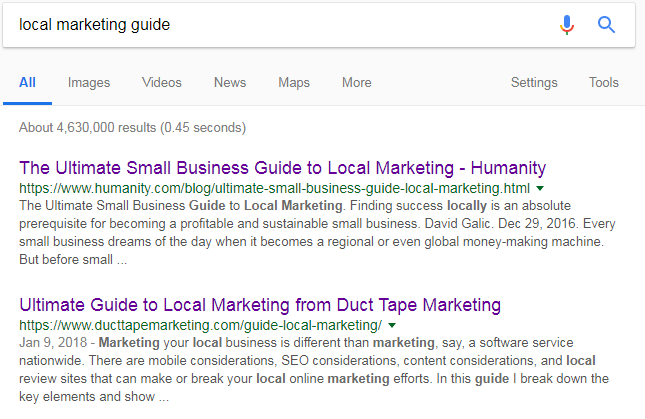
The interlinking has also helped several of the other subposts end up on the first page of search results, such as Adwords for local businesses.
Why do topic clusters work so well?
One reason is that the main page has so much content and so many links that people tend to stay on the page and the site.
Duct Tape Marketing’s bounce rate for their Ultimate Guide is almost zero. Google translates this to be high engagement, which is exactly what it’s looking for.
So how do you create a content package?
There are tools on the market that help you do this.
MarketMuse
MarketMuse helps you to identify content gaps within your website and in the market.
It can help you to build, organize, and optimize your content by the topic cluster to optimize your organic SEO.
Content Strategy
HubSpot has also launched their own content strategy tool.
They have designed it to help you create, publish, and report on your content by topic grouping.
LSIGraph
Another option is to use an LSI generator such as LSIGraph to identify keywords that are related to each other.
It’s a free tool that will provide you with related keywords for whatever term you search.
Google Search
Finally, Google is always an option.
After all, Google wants to provide searchers with the best results. This means it’s to their benefit to help you create the best content.
You can find relevant topic clusters using Google in three different ways:
1. Auto-suggest. As soon as you start typing, Google starts automatically populating suggestions of what it thinks you might be looking for.
For example, this is what I see when I start typing “search engine” into Google.
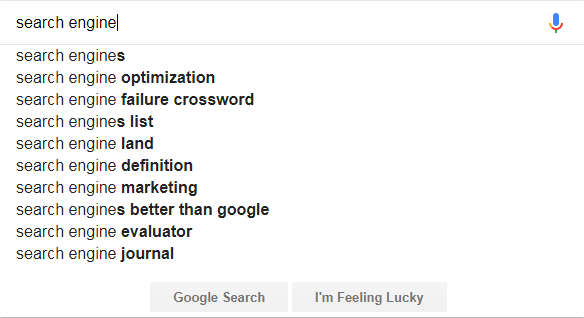
2. Related searches. After you hit enter, you can scroll down to the bottom of the search results page.
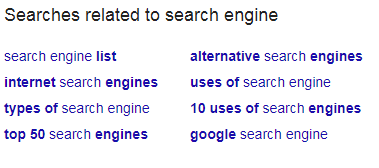
3. People also ask. For some searches, Google will also provide you with a “People also ask” section.

These are common questions Google is asked that it thinks are similar to what you’re trying to find.
Make sure your pillar topic is sufficiently broad enough to be the umbrella for the rest if you’re going to use a pillar page.
Then create separate linked posts for each potential subset topic that you grouped using one of the above-suggested tools.
Once you have content clusters or groupings, it’s also important to make sure you choose content types that align.
For example, consider the following:
- On-site glossaries and FAQ pages are good ways to tackle simple keywords that may be searched by people in the informational stage.
- Pillar pages, cornerstone content and blog posts are great for in-depth answers related to the informational stage, as well as targeting people in the navigational stage.
- Once consumers are into the transactional stage, landing pages are a great way to use content to help close the deal.
Here’s a slightly different approach to lining up content type with buyer readiness stage:
Don’t forget the rest of your SEO arsenal.
This post has focused on how and why to transition from keyword targeting to focusing on customer intent and interest.
However, as I’ve mentioned, engagement is a driving factor in how Google gauges quality content that satisfies intent.
Because of this, we can’t forget the other areas of SEO that also impact engagement.
Technical and off-page SEO are just as important for positive customer experiences.
Off-Page SEO
Off-page SEO is primarily your internal and external link portfolio.
You need to develop a link building strategy that helps promote your site authority and helps show Google you’re a great match for customer intent.
One way to do this was mentioned earlier through the building of topic clusters and content packages.
However, you also need to keep a close eye on who’s linking to you, so that you don’t end up with backlinks that are spammy.
After all, backlinks are currently four of the top eight ranking factors.
To keep your links clean, I recommend conducting a link profile audit on a regular basis to see how things look.
If you find any questionable sites linking to your content, make sure that you disavow them.
Technical SEO
Technical SEO can sound complex, but I promise it’s not as bad as it seems.
It’s also a critical part of any SEO toolkit.
Here’s an excellent high-level summary from Moz on what parts of technical SEO you should begin to focus on:
When thinking about keywords from a technical standpoint, you need to consider three main areas.
1. Content tags
There are two main types of content tags you should focus on: H1 (headings) and H2 (subheadings).
H1 tags are your titles.
H2 tags are subheadings.
You should still make sure one of your relevant keywords is in your H1 tag.
However, with the new algorithm changes, it’s less important that your H2 tags are riddled with keywords, and more important that they withstand a readability test.
Your content, including your subheadings, needs to be simple and flow well.
It should be written for someone reading at a 7th or 8th-grade level.
2. Site Speed
Google released an announcement in January that starting this July pagespeed will be one of their ranking factors for mobile searches.
Not only that, but 40% of your audience will abandon your website if it takes longer than three seconds to load.
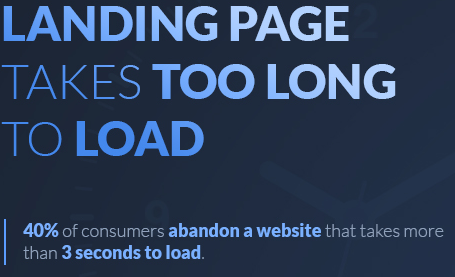
If your page speeds are slow, your bounce rate will increase, causing Google to think that you’re not doing a good job satisfying customers.
3. Mobile friendliness
I’ve already mentioned the importance of mobile earlier in this article.
Mobile landing page optimization is vital now that Google has switched to a mobile-first index.
The number of mobile users continues to every year. Last year 66% of the population had a mobile phone.
Strong technical SEO will help improve important ranking factors such as time on page and bounce rates, by improving the user experience.
It should not be overlooked in any strategy, particularly as the importance of providing outstanding customer experiences increases.
Conclusion
Thanks to advances in technology, the algorithms used by search engines like Google are getting more advanced.
Instead of focusing on simple metrics such as keywords, they are now looking for content that provides value and engagement to audiences.
Google’s algorithm is continuing to advance toward voice search and conversational phrases.
This means the exact wording used in search boxes is becoming less important in which results rank well.
To get your content in front of your desired market, you need to focus on intent, interest, and engagement of customers.
You will need to account for the growing use of Mobile and Voice apps and ensure your content is optimized for them.
Then you need to engage your audience is make sure you understand what their intent is.
Make sure you understand what people are really looking for when they use certain keywords.
This means combining their searcher intent with where they are in the conversion funnel and using your content to target them properly.
You can use tools such as Behavior Flow, Site Search or Heat Maps to better understand the interest and intent of your current audience.
Then you can focus on building out in-depth topic clusters and content packages to target different customers.
Create ultimate guides and resource centers for customers early on in the conversion funnel.
Build out leadpages and conversion posts for customers near the bottom of the funnel.
Finally, continue to use keywords, but use them the right way. Don’t keyword stuff your posts. Looking for short phrases and referencing them multiple times is no longer enough.
However, you can use keywords to help you understand searcher intent and to build context into your articles and guides.
What tool are you using to cluster your content around customer intent and interest?
About the Author: Neil Patel is the cofounder of Neil Patel Digital.
from The Kissmetrics Marketing Blog https://ift.tt/2s5vtVG
via IFTTT
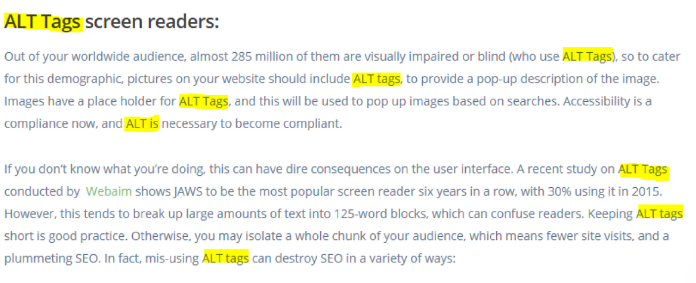
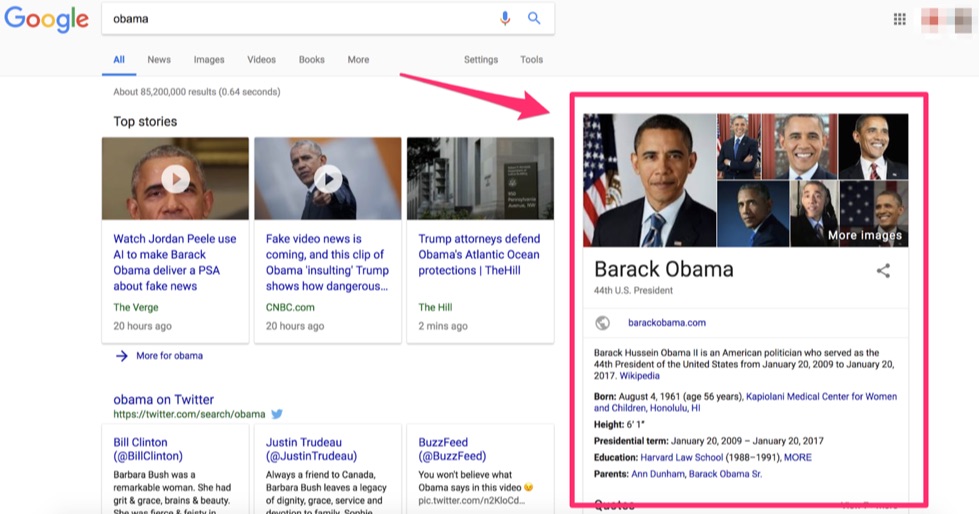
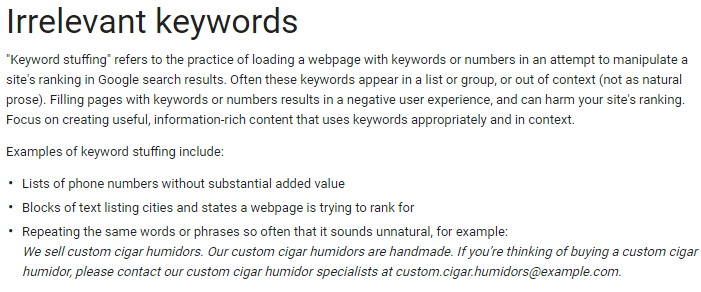
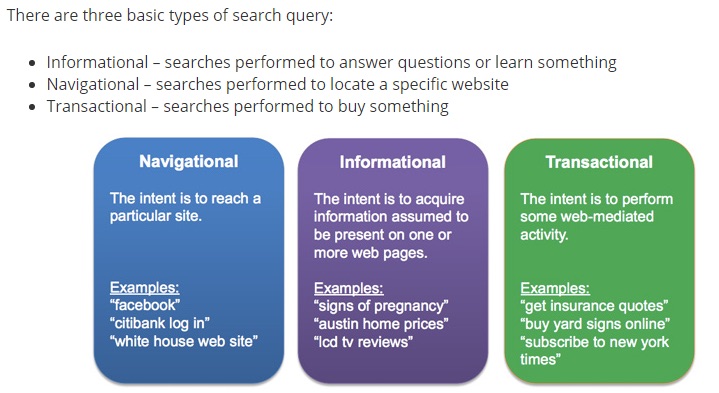
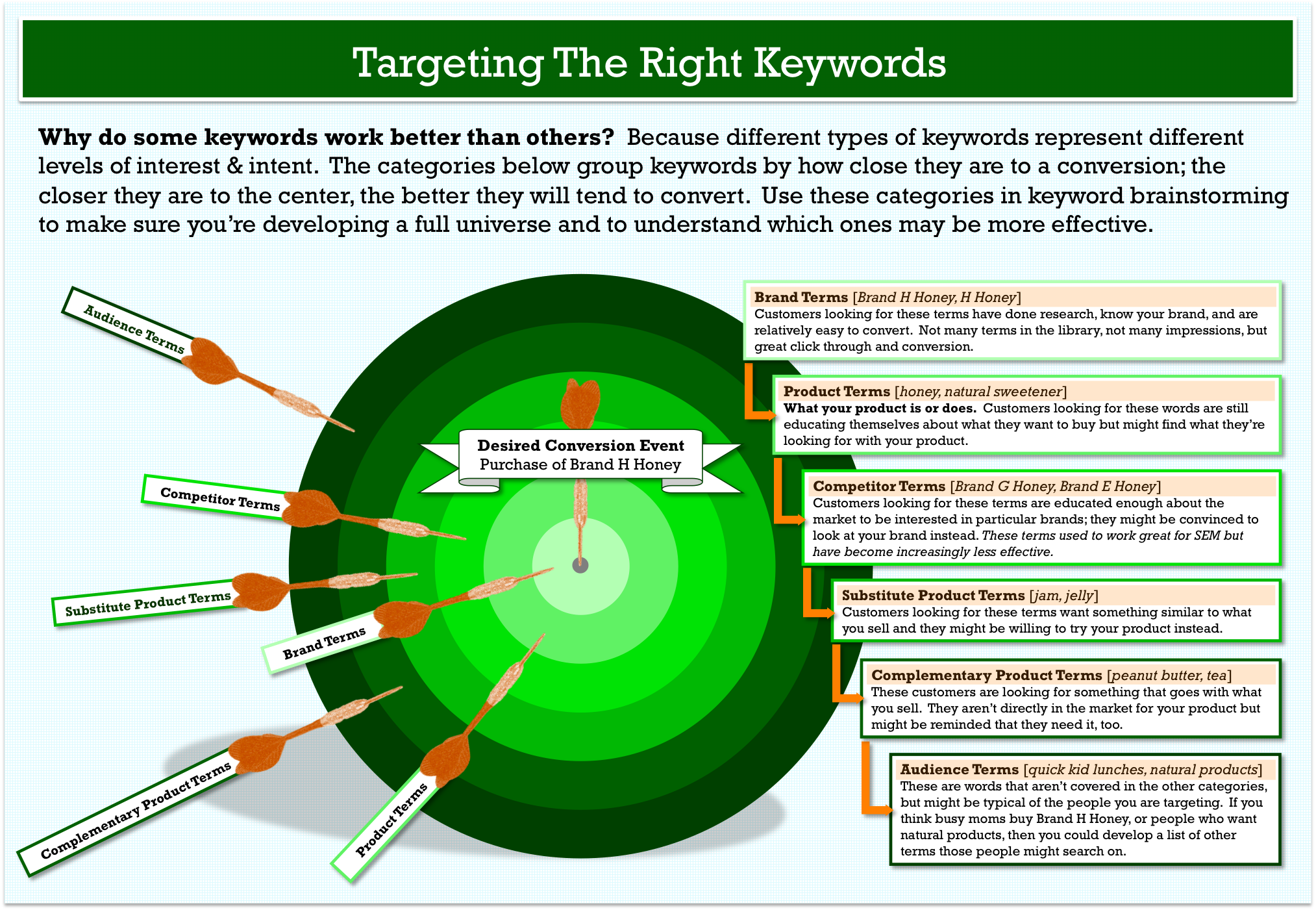

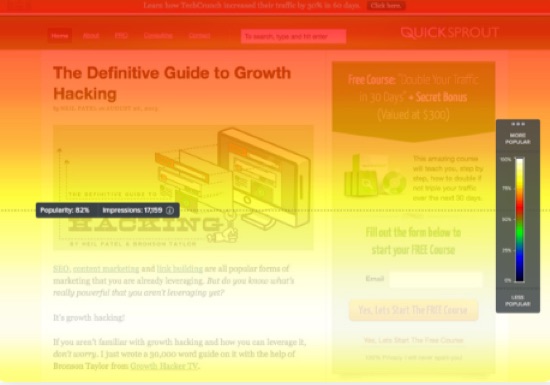
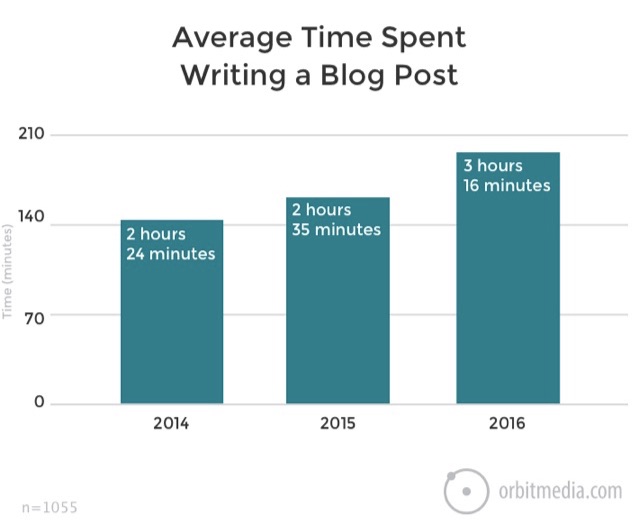
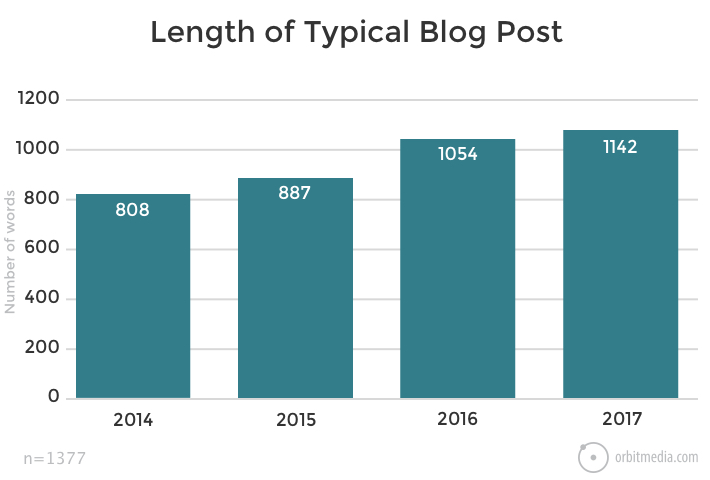
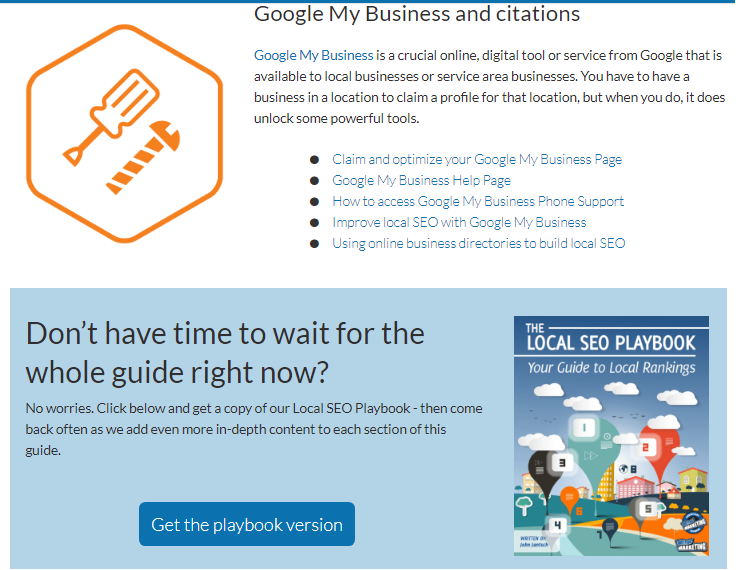
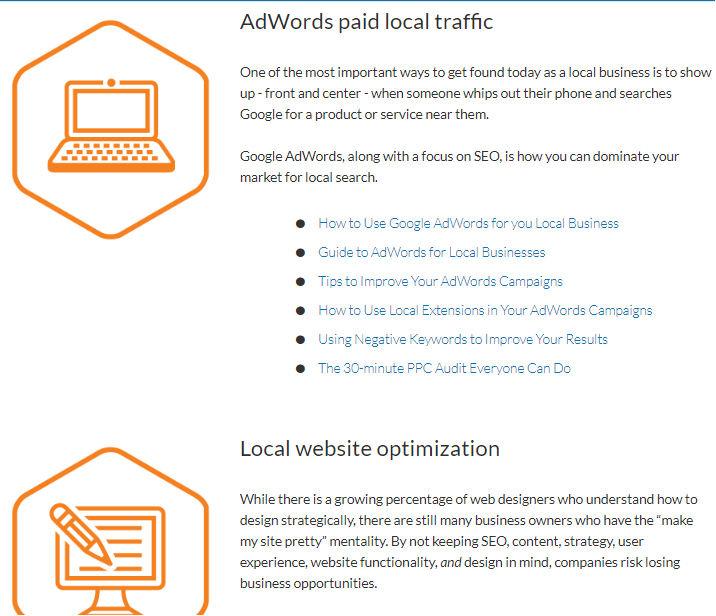

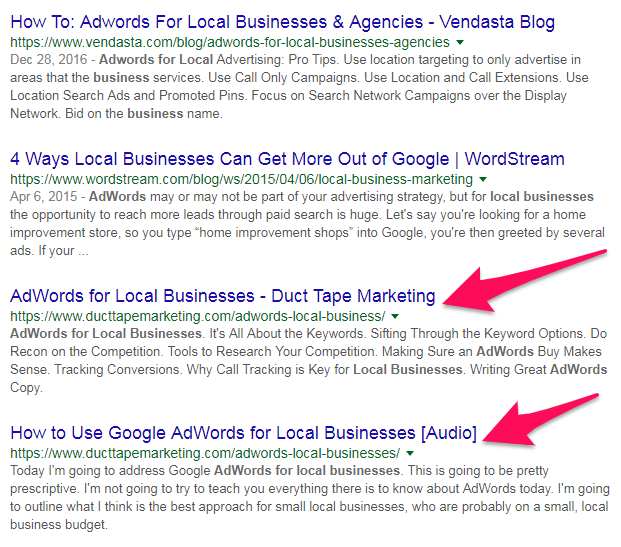
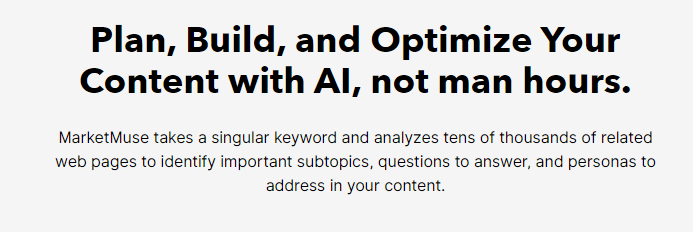
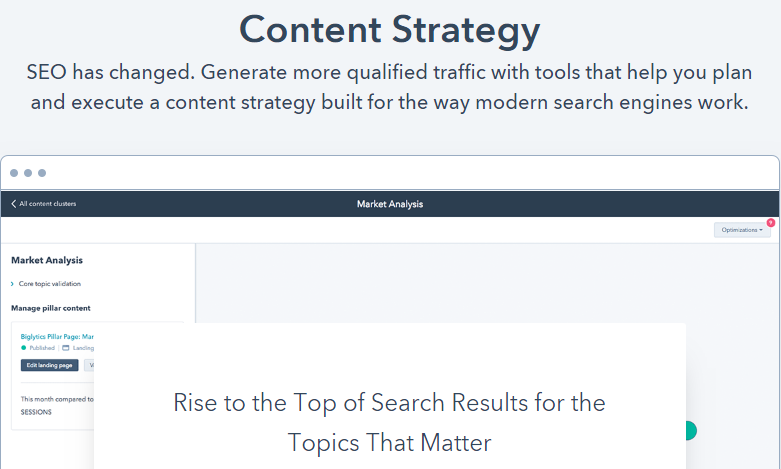
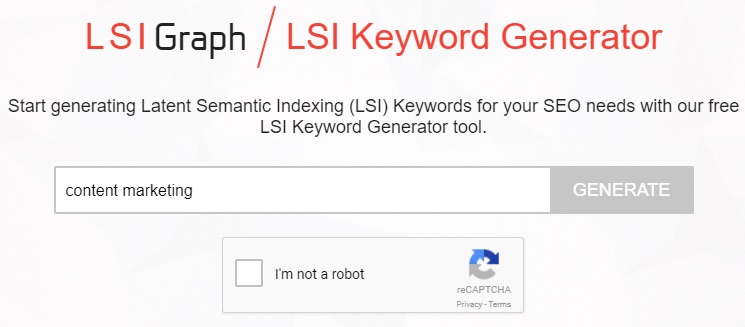
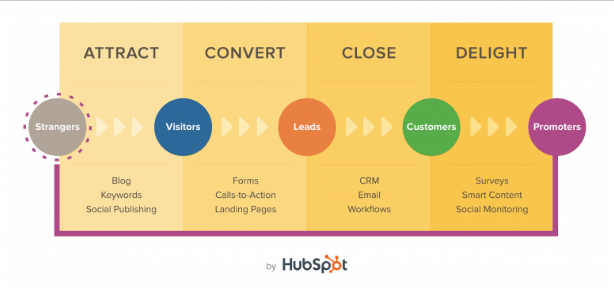
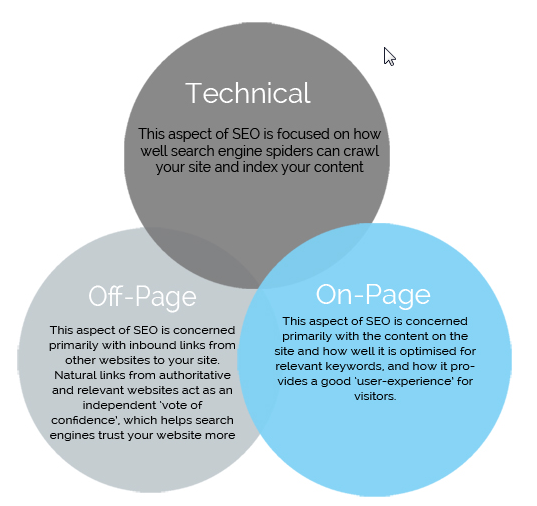
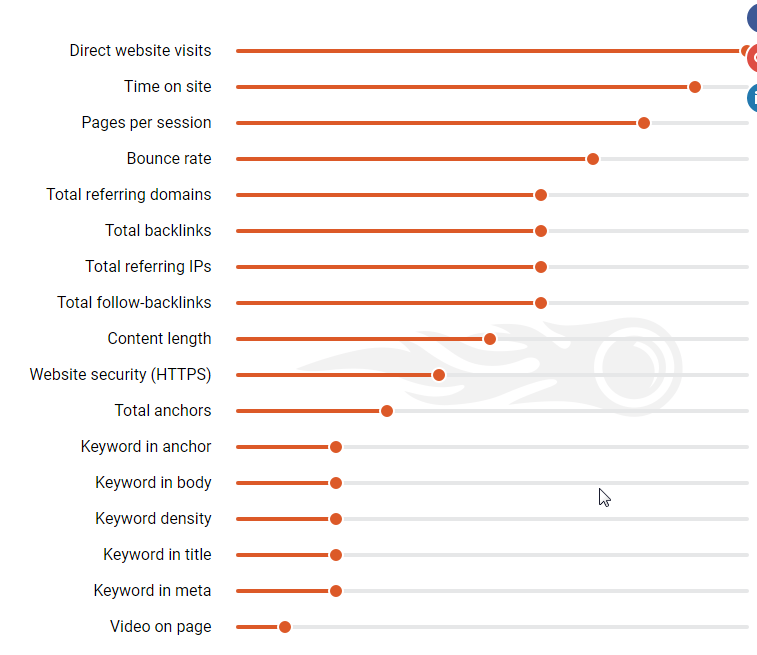
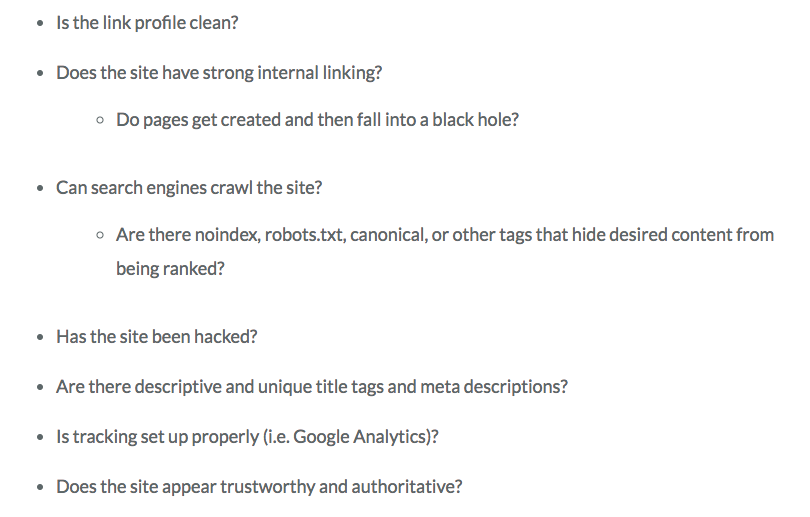
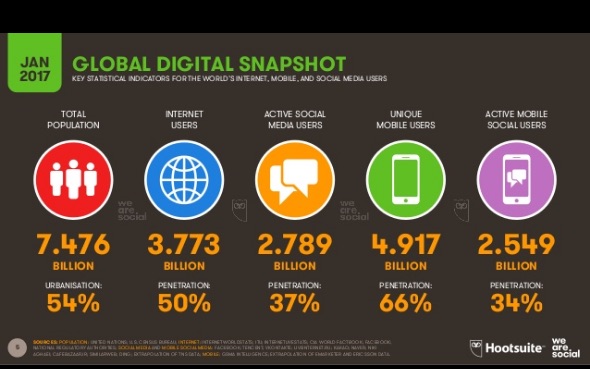
No comments:
Post a Comment